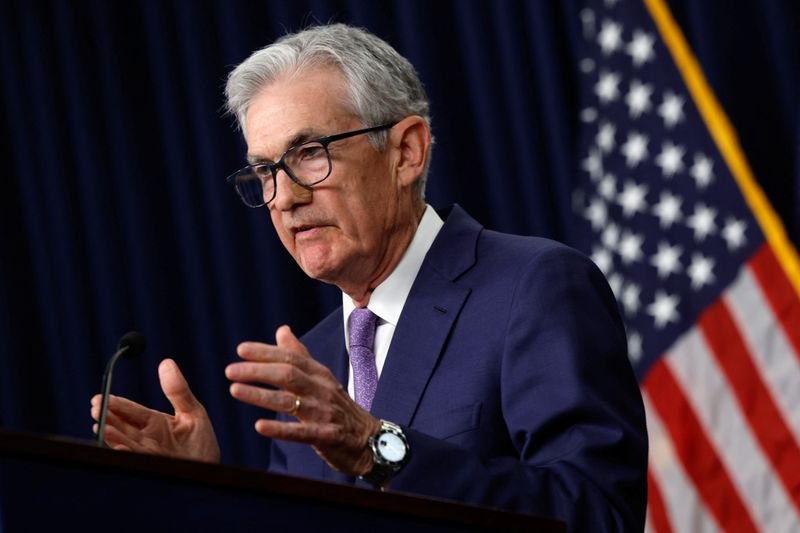Investing.com — Jerome Powell’s recent speech at the Jackson Hole symposium has ignited a response in financial markets, and many analysts believe that his dovish tone could fuel further gains in an already hot stock market.
The Federal Reserve Chair’s remarks seemed to confirm widespread expectations of a forthcoming rate cut, which could have broad implications for both equities and the broader economy.
Powell’s speech was interpreted by many as dovish, signaling the Fed’s readiness to lower interest rates in the near term.
“It was also unambiguously bullish for the stock market because it confirmed widespread expectations that September’s cut in the federal funds rate is in the bag and will be followed by several more cuts,” said analysts at Yardeni Research in a note.
This aligns with the market’s expectations, which have been pricing in multiple rate cuts as the Fed aims to navigate slowing inflation without triggering a recession.
Investors took Powell’s comments as a green light for continued gains, particularly in sectors that are sensitive to interest rates.
The anticipation of lower rates tends to boost stocks as borrowing costs decrease, corporate profits potentially rise, and the relative attractiveness of equities increases compared to fixed-income assets.
However, while Powell’s dovish stance has been bullish for the stock market, there’s a growing sense that the market may have already priced in much of the anticipated rate cuts.
“Furthermore, stronger-than-expected economic news is likely in coming weeks, in our opinion. If so, that might dampen rate-cut expectations,” the analysts said
Despite this, Yardeni Research remains optimistic, sticking with their “Roaring 2020s” base-case scenario. They assign a 60% subjective probability to this outlook, which envisions the reaching 5,800 by the end of this year, 6,300 by the end of next year, and 6,825 by year-end 2026.
This scenario is underpinned by an optimistic view of earnings growth and a forward price-to-earnings (P/E) ratio of 21.
The possibility of a stock market “meltup”—a rapid and unsustainable increase in asset prices—has also gained attention. Yardeni Research currently assigns a 20% probability to this scenario, but there is consideration of raising these odds following Powell’s speech.
A record $6.2 trillion in money market mutual funds (MMMFs), including $2.5 trillion in retail MMMFs, represents significant liquidity that could quickly flow into equities if money market yields decline due to rate cuts.
Already, there are signs of money moving into riskier assets like small-cap stocks, as seen in the index. These companies are often more sensitive to changes in interest rates, and the expectation of lower rates could drive further investment in this area.
Another critical aspect to consider is the yield curve, which has been steadily disinverting. As of Powell’s speech, the spread between the 10-year and 2-year US Treasury notes had narrowed to just -9 basis points.
Historically, a disinverted yield curve has preceded recessions and bear markets, but Yardeni Research notes that this time could be different. Unlike previous cycles, the Fed is lowering rates in response to falling inflation rather than an imminent financial crisis.
Despite the bullish outlook, geopolitical risks and inflation concerns cannot be ignored. Yardeni Research also maintains a 20% probability for a 1970s-style scenario, which could be exacerbated by rising geopolitical tensions.
For instance, recent military actions between Israel and Hezbollah have raised concerns about potential disruptions in global oil supplies, with prices rebounding following Powell’s speech.
Higher energy prices could reignite inflation fears, complicating the Fed’s task of balancing economic growth with price stability. This underscores the ongoing risks that could derail the current optimism in the stock market.
In terms of insider activity, Yardeni Research, said that insider buying slowed last week as the market recovered from its early August sell-off. However, there were still notable purchases in energy sectors, particularly among companies with exposure to US and energy services.
There were also actionable buys in technology, business development companies with high dividend yields, and retail sectors, including brick-and-mortar stores, online entertainment, cosmetics, and travel-related companies.

